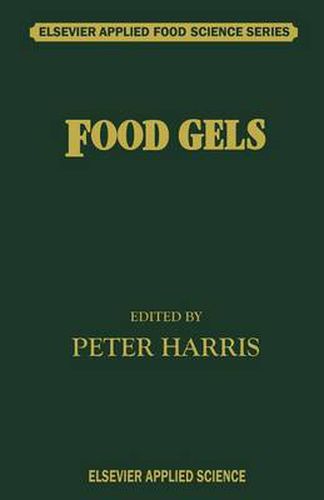Readings Newsletter
Become a Readings Member to make your shopping experience even easier.
Sign in or sign up for free!
You’re not far away from qualifying for FREE standard shipping within Australia
You’ve qualified for FREE standard shipping within Australia
The cart is loading…






This title is printed to order. This book may have been self-published. If so, we cannot guarantee the quality of the content. In the main most books will have gone through the editing process however some may not. We therefore suggest that you be aware of this before ordering this book. If in doubt check either the author or publisher’s details as we are unable to accept any returns unless they are faulty. Please contact us if you have any questions.
The food technologist who wishes to produce a gelled product is faced with two basic options for achieving the desired effect; whether to use a protein or a polysaccharide. Although a gel can be formed by either a protein or a polysaccharide, the resultant gels have different characteristics: * Polysaccharide gels are characterised by their fine texture and transparency which is achieved at a low polymer concentration. They can be formed by heating and cooling, pH adjustment or specific ion addition . * Protein gels are characterised by a higher polymer concentration (5-10%) and are formed almost exclusively by heat denaturation. Before reaching a final decision, the technologist must take a number of factors into consideration. The purpose of this book is to help the technologist in his choice by providing fundamental practical information, in one book, on the properties of gels (and factors which influence them) for both types of biopolymer. To help the reader, each chapter is (wherever possible) organised in the same way so that, for example, information on structure will always be available in section 2. The examples in the Applications section of each chapter are not meant to be exhaustive, but to illustrate the various ways in which the particular polymer can be used to form a gelled product.
$9.00 standard shipping within Australia
FREE standard shipping within Australia for orders over $100.00
Express & International shipping calculated at checkout
This title is printed to order. This book may have been self-published. If so, we cannot guarantee the quality of the content. In the main most books will have gone through the editing process however some may not. We therefore suggest that you be aware of this before ordering this book. If in doubt check either the author or publisher’s details as we are unable to accept any returns unless they are faulty. Please contact us if you have any questions.
The food technologist who wishes to produce a gelled product is faced with two basic options for achieving the desired effect; whether to use a protein or a polysaccharide. Although a gel can be formed by either a protein or a polysaccharide, the resultant gels have different characteristics: * Polysaccharide gels are characterised by their fine texture and transparency which is achieved at a low polymer concentration. They can be formed by heating and cooling, pH adjustment or specific ion addition . * Protein gels are characterised by a higher polymer concentration (5-10%) and are formed almost exclusively by heat denaturation. Before reaching a final decision, the technologist must take a number of factors into consideration. The purpose of this book is to help the technologist in his choice by providing fundamental practical information, in one book, on the properties of gels (and factors which influence them) for both types of biopolymer. To help the reader, each chapter is (wherever possible) organised in the same way so that, for example, information on structure will always be available in section 2. The examples in the Applications section of each chapter are not meant to be exhaustive, but to illustrate the various ways in which the particular polymer can be used to form a gelled product.